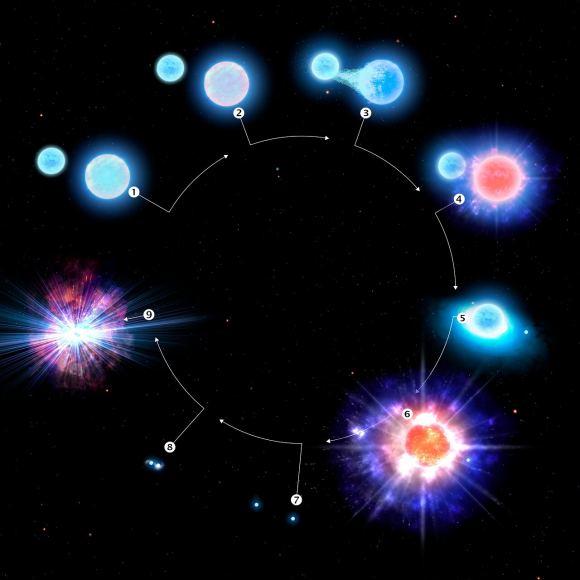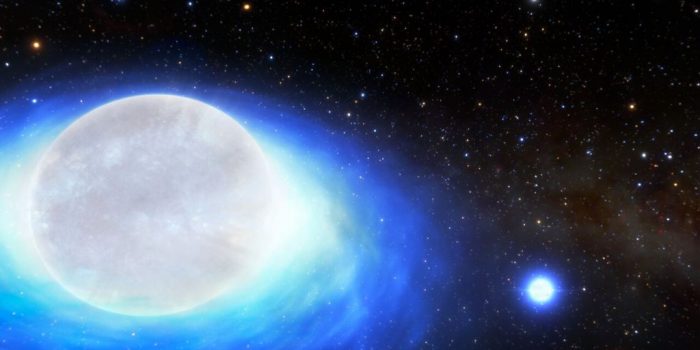The observation of neutron stars merging changed astronomy forever, but this is the first time scientists have spotted one before the explosion.
A neutron star 11,400 light-years away is doomed to eventually collide with its giant companion. Astronomers have identified the remnants of one such firecracker in SGR 0755-2933, in the southern constellation of Puppis. In new research, scientists say that earlier in its lifetime, this star transferred abnormally high amounts of mass to its binary companion — so much so that it was not left with enough material for an explosive death.
Instead, it ended in a quiet “ultra-stripped” supernova, a rare cosmic event that leaves a super-dense remnant called a neutron star in its wake. By the time it does, the giant will also be a neutron star, setting off an explosion that will seed the galaxy for thousands of light-years around with precious metals, known as a kilonova.
Kilonovae are extraordinarily rare. Astronomers think there are only about 10 of them in the Milky Way. But they’re extraordinarily powerful and produce heavy elements like uranium, thorium, and gold.
“We know that the Milky Way contains at least 100 billion stars and likely hundreds of billions more. This remarkable binary system is essentially a one-in-ten-billion system,” said astronomer and co-author of the study André-Nicolas Chené, in a statement. “Prior to our study, the estimate was that only one or two such systems should exist in a spiral galaxy like the Milky Way.”
The makeup of the universe depends on extremely rare events. Supernovas, which occur roughly once a century in galaxies as large as the Milky Way create and disperse metals that go on to form the basis of future planets. Some of the rarer metals require something even more exotic, the collision of two neutron stars, first observed in 2017 when gravitational waves alerted us to one of the most important events in astronomical history.
“This remarkable binary system is essentially a one-in-10-billion system,” André-Nicolas Chené, an astronomer at the National Science Foundation’s NOIRLab research center and a co-author of the new study, said in a statement.
Neutron stars are the result of supernovas of stars with masses 10-25 times the mass of the Sun. Although thousands of them exist in the Milky Way, two seldom orbit each other so the discovery of a future such pair by the SMARTS 1.5-meter Telescope in Chile, announced in Nature, is a stunning achievement. Even some neutron stars in mutual orbits will never form a kilonova if the distance between them is too great. Consequently, the discovery that the system known as CPD-29 2176 is tight enough to eventually collapse turns a big discovery into something truly epic.

Millions of years from now, the team predicts that the two neutron stars will spiral slowly toward each other in a cosmic dance, ultimately colliding in a kilonova explosion. Such explosions are known to be a source of immense quantities of heavy elements like platinum, xenon, uranium, and gold “that get hurled into the universe,” Richardson said.


